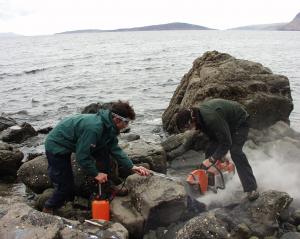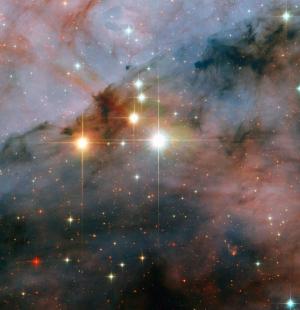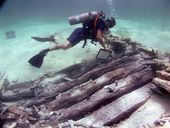Around 164 million years ago the earliest aquatic turtles lived in lakes and lagoons on the Isle of Skye, Scotland, according to new research.

© UCL Cell and Developmental BiologyResearchers cutting the block of stone to extract the turtle.
Recent scientific fieldwork led by researchers from UCL and the Natural History Museum on Skye, an island off the north-western coast of Scotland, discovered a block of rock containing fossils that have been recognised as a new species of primitive turtle Eileanchelys waldmani.
Months of work at the Natural History Museum freed these skeletons from the rock, revealing four well-preserved turtles and the remnants of at least two others. These remains, and a beautiful skull found nearby, represent the most complete Middle Jurassic turtle described to date, offering substantial new insights into the early evolution of turtles and how they diversified into the varied forms we see today.
Investigation into the palaeoecology of the area - the relationship between these ancient turtles and their environment - shows that these turtles lived in conditions that were very different to modern-day Skye. The turtles were found alongside fossils of other aquatic species such as sharks and salamanders that would have lived in a landscape made up of low-salinity lagoons and freshwater floodplain lakes and pools.




